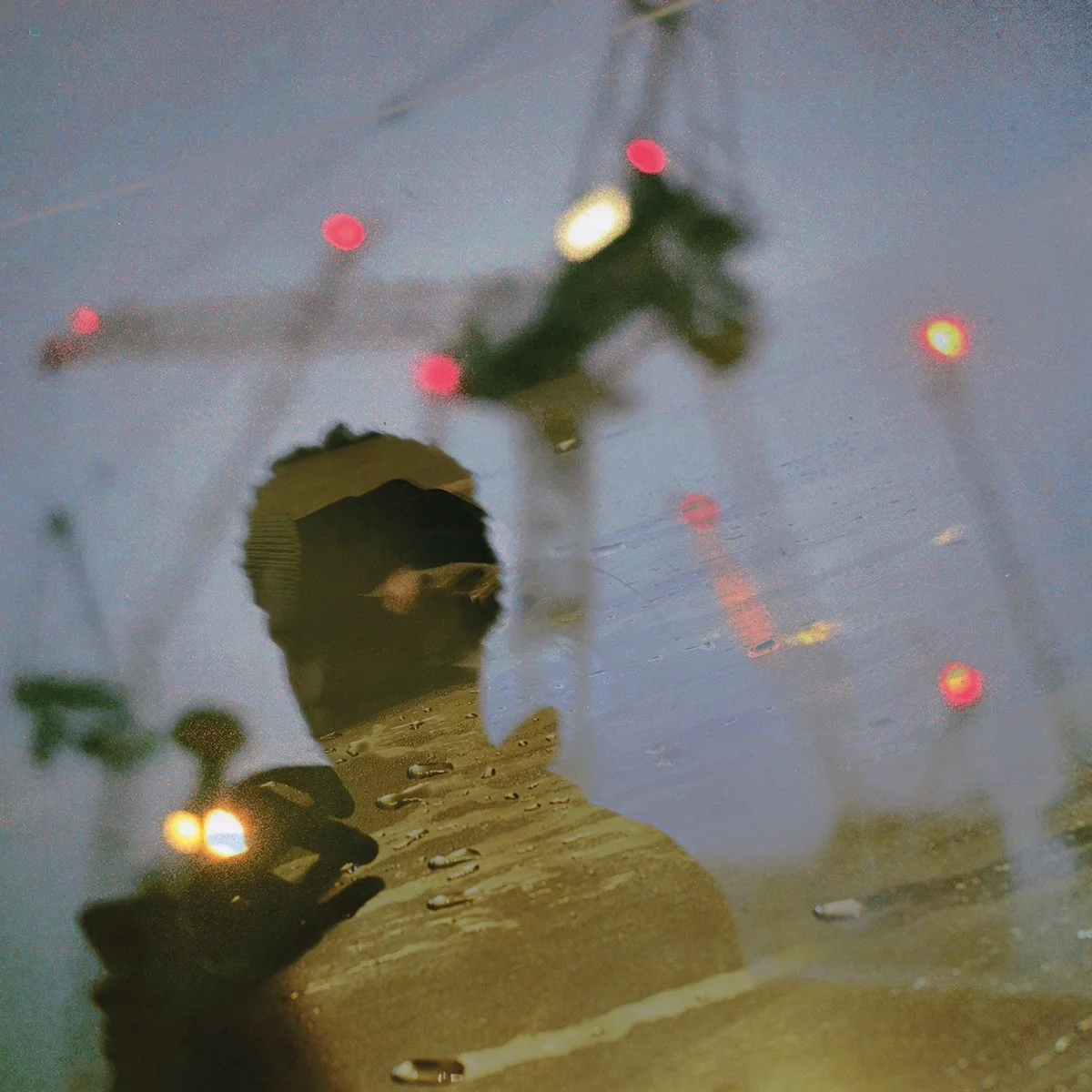Condition: The interval we live in
In 2025, even emotion feels pre-rendered. Platforms don’t just predict what we’ll play next—they shape how we’ll feel when it arrives. The Interval We Live In reconsiders Mica Levi, Tirzah, and Coby Sey as artists who—before the automation fully set in—were already mapping another rhythm of being. Their work doesn’t resist the system; it breathes inside it, keeping the human lag audible where everything else wants to close.
I sometimes think of the room in Hoxton in the mid-nineties, Sunday night. Paint over brick, damp trying to push through; a cheap strobe splintering bodies into frames. We didn’t move so much as flicker. Back then the break felt like a verb—not a brand. We told ourselves it was escape, but what I remember now is coordination: a hundred nervous systems borrowing the same unstable 160 bpm grid. You throw your weight onto a rhythm, the rhythm throws you back. For a few hours, that trade could pass for freedom.
The grid won, of course; grids usually do. Capital is nothing if not a genius of tempo. It learns quickly how to hire whatever once threw it off. The promise of velocity—what if we just went faster, together?—morphed into an obligation. When everything is billed to speed, it stops differentiating. I now know you can live inside models of speed and feel nothing at all.
Lately I’ve been listening, instead, for delay. Not slowness. Delay as a positive figure: a shaped interval, the buffered second in which you can still change your mind, the intake of breath before the sentence arranges itself. I don’t mean the stutter of a dying phone or the mush of a bad stream. I mean the small hesitations that let feeling surface before purpose rushes in to label it. The interval where attention remembers it has a choice. This latency is not glamorous. It won’t trend. But I suspect it’s where we live now—if we want to live at all.
I keep finding that interval in what some might call minor pop—minor not as in small or inferior, but as in work that torques a dominant language without exiting it, the kind of pop the platforms file under alt-R&B or experimental or post-club, as if naming could neutralise the deviation. I hear it in Coby Sey, Tirzah, Mica Levi. Three temperaments, long entangled; one shared refusal to laminate experience into clarity-for-clarity’s-sake. They record not just songs but conditions—rooms, geographies, signal paths, the seam kept visible between intention and capture.

Sey circles a word or phrase until its meaning loosens. What’s left isn’t message but measure—the sound of time being held. Each return pares language down to breath, pressure, fatigue. The repetition doesn’t advance; it holds. The voice becomes duration made audible, a human delay line in a system built for speed.
Tirzah practises nearness like a craft. On ‘trip9love…???’ (2023, Domino), the gain runs hot; the clipping isn’t an error to be tidied but a proof of proximity. You can hear fingers, the bedding, the plasterboard, and the faint breath that fogs the mic—condensation turning air into signal. Instead of carving a pocket for vocals, she lets voice and texture live in the same frequency, consenting to a little gentle interference. The result doesn’t flatter you. It invites you to stand close enough to risk being touched.
Levi keeps erosion as a structural element—on pieces like ‘Slob Air’ (Hyperdub,2024) and ‘Waves’ (CURL Recordings, 2021)—not lo-fi as retro affect, but time acting on signal—heat around an attack, a mix that leaks, a willingness to let edges fray. It’s a way of refusing to coat experience until it shines. We often praise ‘transparency’ in sound—as if the machine could or should disappear. But transparency is itself a style, and like all styles, it hides its hand: Don’t look over here. Levi looks straight at the tear, never reaching for the stitch.
Latency gets a bad rap because we mainly encounter its industrialised form—platform lag, bureaucratic lag, the kind of deferrals that exhaust rather than replenish. But not all latency is a stall; some of it is generosity. A proffered second in which our speech catches up to our feeling. The last human grain, people say, and I think: perhaps the first ethical one. Time you consent to share.
It’s no accident that platforms try to striate time—schedules, drops, release radar—as if tempo could be centrally administered. I like the stubbornness with which latency re-opens a more navigable time. Not chaos; just a space without bars already counted. When Tirzah withholds legibility, she isn’t playing coy. She’s giving hearing its own pace back. She’s saying: take the time you need to meet this; I won’t over-clarify to save you the work. Instead her music drifts inside the feed, changing what ‘attention’ feels like from within. In a culture where every event dissolves on arrival, the radical thing isn’t to be louder; it’s to alter the texture of listening itself. We live in leak-time now—slow, ordinary, real. The dramas keep coming, but they no longer land. What passes for event is just seepage. What endures is maintenance: keeping the channel open, refusing premature resolution, letting entropy circulate as warmth.
A friend says the old jungle skyline—those towers of syncopation that punctured the night—has given way to something closer to a rhizome. I think of the nights organised by CURL—the loose South London collective around Mica Levi, Coby Sey and Brother May—where a set feels like a porous plateau more than a sovereign block. Edges blur; errors are promoted; silence stands. Roles pass around the room like a bowl. Authority isn’t a throne; it’s a rotating task: keep the floor from falling out. Information moves sideways. The refrain doesn’t claim territory; it builds shelter.
Meanwhile, the major apparatus is doing what it does best—weaponising the refrain to command markets. Hook as territorial flag, clarity as control, an exquisite attention machine that’s learned to extract surplus attention from perfectly sealed mixes. People get upset when an icon rises to stand in for the machine. But that emblem isn’t a person so much as a function. Let’s not pretend it’s scandal; it’s design. You don’t beat design with purity. You alter time from the inside so that contact outlives the count.
Image: Conduit (Coby Sey, AD 93, 2022). Artwork courtesy of AD 93 and Coby Sey.
A question haunts the edges of this kind of work: what community does it imagine? When rooms are priced and policed; scenes atomise. The replacement for the crowd can’t be a void. These days it looks like distributed intimacy: WAVs as care packages, DMs as corridors, small shows designed as rehearsals rather than coronations. Sometimes, late at night, scrolling through Bandcamp, I picture it as the new dance floor. No lights, no bodies—just people in separate rooms orbiting the same quiet pulse. Each upload a flare, each download a hand extended. The transmissions I’m describing aren’t abstract; they’re the ones running through Coby’s hesitations, Tirzah’s proximity, Mica’s bleed. Voice through plasterboard. Buffered, imperfect, breathable. I don’t mourn the club so much as I try to learn how to keep a channel open across walls. Which is also why I’ve stopped asking circulation to tell me anything meaningful about contact. Metrics are climate; they pass over without touching, regulating what even counts as real.
‘We need to support each other,’ Coby says, and it almost lands like a slogan until you hear it as cadence. What if we treated support like a refrain more than a vow—the repetition that holds space open long enough for another person to step inside? That’s politics scaled to the breath: not the only politics, but a necessary one in leak-time.
As for making: don’t resolve before the affect arrives. Prefer frictions that imply contact over clarities that imply product. Compose at the speed of comprehension, not the speed of distribution. Treat every artefact as a trace that can be recomposed, not a stain to be wiped. Build conditions—refrains, plateaus—in which listeners can contribute: steady the ridge, fill the gap, keep the drone. We mistake participation for comment; participation lives in time. The refusal to close isn’t modest; it’s insurgent. When every system optimises for completion, to leave something unfinished is to leave it human. That’s the wager running beneath this music: not transcendence, but a recalibration of sense itself. It’s not about nostalgia for what sound used to feel like; it’s about building new conditions for feeling to happen at all.
The real event is no longer the drop, but the holding pattern—the moment that refuses to resolve into signal or silence. It’s here, in that suspended half-second, that another kind of social body might take shape: one tuned not to speed, but to sustain.

Maybe that’s what their music teaches: that attention isn’t a tool but a muscle. It tires, it repairs, it remembers. The body keeps score of every tempo it has learned to survive. When I listen, I can feel those old reflexes waking up—the reach for the drop, the expectation of release—then softening as the sound refuses to deliver on cue. Something in me adjusts, slower, wider, like it’s learning a new kind of balance.
I carry the old break in my body the way a dancer carries old technique. Muscle remembers. But I don’t chase it like I used to. The chase belongs to an era that believed acceleration could save us. These days I care more about the second in which the signal wavers and doesn’t close. Some of us were trained to fear that second as a failure of craft. I’m starting to think it’s the only place craft still has teeth.
Latency isn’t lack. Lag is capacity. It’s where sense and sensation renegotiate their treaty—the little frontier in which comprehension can arrive without domination. This is unglamorous work. It looks a lot like maintenance. (Good.) The spectacular had a long run and it’s made us tired. What we need now are survivable tempos, survivable rooms.
Late at night, I listen to Coby Sey’s ‘Conduit’ (AD 93, 2022) through the laptop speakers, though I know I shouldn’t. The sound is small, compressed, bleeding into the soft whir of the laptop fan. Still, it moves me. The bass trembles against the desk, travels through my wrist bones, barely there. The room feels unlit but awake. Don’t optimise. Let the table take the low end. Notice the image smear at the edges. (Smear is a teacher; smear tells you where you are.) Move a glass, then leave it where the ring forms. Meet the signal halfway. That’s the ethics in one sentence, compact enough to carry: not escape—habitation.
I return to the Hoxton room, not to mourn it but to arrive where I am. That night, the break gave us a grid to borrow. Today, the interval gives us a time to keep—one second long, renewed as often as we can stand it. If there’s a politics in that, it’ll be built from refrains: keep the channel open; hold the note until someone else can hear it; resist the urge to seal what might still be alive. A fragile programme. A durable one. So yes—learn to love the micro-lag. Not as a quirk or a fetish, but as a ground. There are truths that clarity can’t tell. There are spaces we can only keep if we agree to move a little slower than our fear. If pop once promised a clean escape, perhaps minor pop can promise something else: a readable intimacy, a time in which contact is not crushed by circulation. Not a revolution. A habit. A way to stay.
We can build it out of seconds. We have them. We’re in them now.
Written by Neil Housego, October 2025
Images: Stills from Mica Levi’s “Waves” (directed by Finnbar Porteous, CURL Recordings, 2021), portrait of Tirzah by Spike Lynch-Koch.

